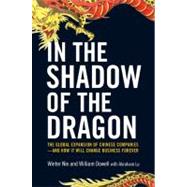
What is included with this book?
| Preface | p. vii |
| No Longer a Shrinking Violet | p. 1 |
| Coca-Cola, Huiyuan Juice, and CNOOC: Protectionism on Both Sides of the Pacific | p. 31 |
| Huawei: Technology Dictates, but Politics Still Counts | p. 59 |
| TCL Takes Over Thomson: Li Dongsheng's Normandy | p. 77 |
| Lenovo: IBM Lends a Hand | p. 99 |
| Kangnai, Haili, and Li Ning: Moving Up the Value Chain | p. 125 |
| CHINT Switches on China's Electricity | p. 151 |
| Ping An Brings Modern Finance to China | p. 175 |
| Han's Laser: Creating New Markets | p. 207 |
| Cracking the American Retail Market: Who Is Haier? | p. 227 |
| China Moves Ahead on Clean Energy | p. 245 |
| All Roads Lead to Innovation | p. 253 |
| The Implications for China and the Rest of the World | p. 271 |
| Index | p. 285 |
| Table of Contents provided by Ingram. All Rights Reserved. |
The New copy of this book will include any supplemental materials advertised. Please check the title of the book to determine if it should include any access cards, study guides, lab manuals, CDs, etc.
The Used, Rental and eBook copies of this book are not guaranteed to include any supplemental materials. Typically, only the book itself is included. This is true even if the title states it includes any access cards, study guides, lab manuals, CDs, etc.